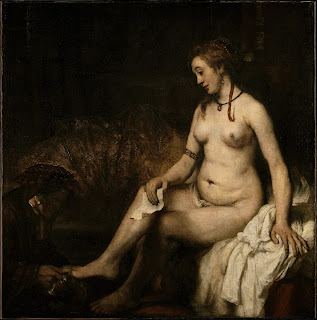Firma y fecha: __ (c. 1657-58)
Lienzo, 110 x 88 cm
MUSÉE DU LOUVRE
Lienzo, 110 x 88 cm
MUSÉE DU LOUVRE
- En esta obra (que representa supuestamente a Hendrickje y la hija de ambos, Cornelia) Rembrandt casi se mimetiza con Tiziano. No está bien resuelta la fusión con su propio estilo, de ahí el ligero aire de pastiche. En el deslumbrante "RETRATO DE FAMILIA" de BRAUNSCHWEIG alcanzó la síntesis total.






































